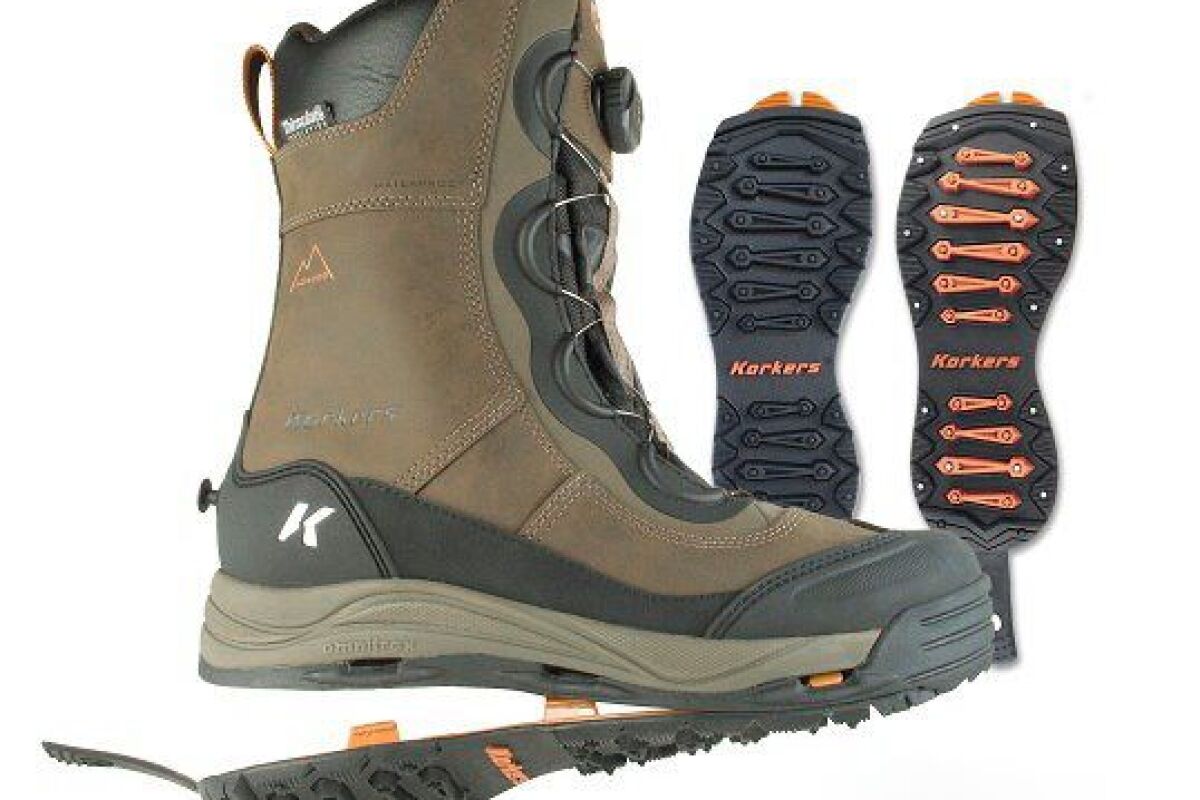Snow, slush, glop, black ice, slick ice, chunder ... no matter how grippy and surefooted your winter boot outsoles are, one of those surfaces is sure to have you grabbing desperately at the air as your backside prepares for a bruising. That's especially true if the sole doesn't include any type of metal traction cleats or bars. Korkers attempts to provide the perfect traction in all situations by offering an interchangeable outsole system with its boots. You can adjust your soles for snow, ice and more ice.
Korkers has been offering fishing wading boots with interchangeable soles for years. It extended its market footprint (pun intended) to winter boots this winter. Its IceJack, SnowJack and StormJack boots are all built with the OmniTrax 3.0 Interchangeable Sole System, and each boot includes the SnowTrac and IceTrac soles.
The SnowTrac soles are Korkers' versatile rubber sole that the company says is good for both wet and dry conditions. It recommends them for winter "trail adventures" and activities that include both indoor and outdoor elements.
The IceTrac upgrades your traction with a series of 16 carbide spikes. This sole is designed for more winter-intensive activities that may include slippery ice, slush and snow. Korkers recommends them for hiking in snow and ice, snowmobiling and working outdoors where slippery conditions exist.
The latest OmniTrax system allows users to install soles without even removing the boots. Snap the sole into place and walk forward - the orange tabs will lock into the shoe when you step down, providing a visual and audible cue letting you know the sole is locked and loaded.
For those that really immerse themselves in "extreme ice conditions," Korkers also offers the IceTrac Extreme, which is equipped with burly, 7mm carbide traction studs. We're thinking this would be the choice of ice fisherman and grandparents who walk five miles over a frozen lake to get to school every day. The IceTrac Extreme does not come with the boots and is available separately for US$39.99.
In addition to their innovative soles, Korkers boots feature Thinsulate insulation (200 g to 600 g, depending upon model) and 100 percent waterproof construction. The $200 IceJack includes a turn-dial Boa lacing system, while the SnowJack ($160) and StormJack ($140) use traditional boot laces.
While interchangeable soles appear to be unique to Korkers, other footwear companies offer similar traction systems. Icebug, a Swedish manufacturer of running shoes, winter boots and other footwear, offers shoes with built-in carbide spikes. The spikes actually retract into the sole on harder ground, so that they don't trip you up when you go from ice to pavement. While many of its shoes come with the spikes pre-installed, Icebug offers the Trail BUGweb for some of those that don't. The rubber accessory with integrated traction spikes is designed to fit into the sole patterns of certain shoes.
For those that don't want to spend the money on dedicated shoes or boots, add-on traction systems like Yak Trax and Stabilicers fit over pretty much any shoes.
Source: Korkers via The GearCaster






